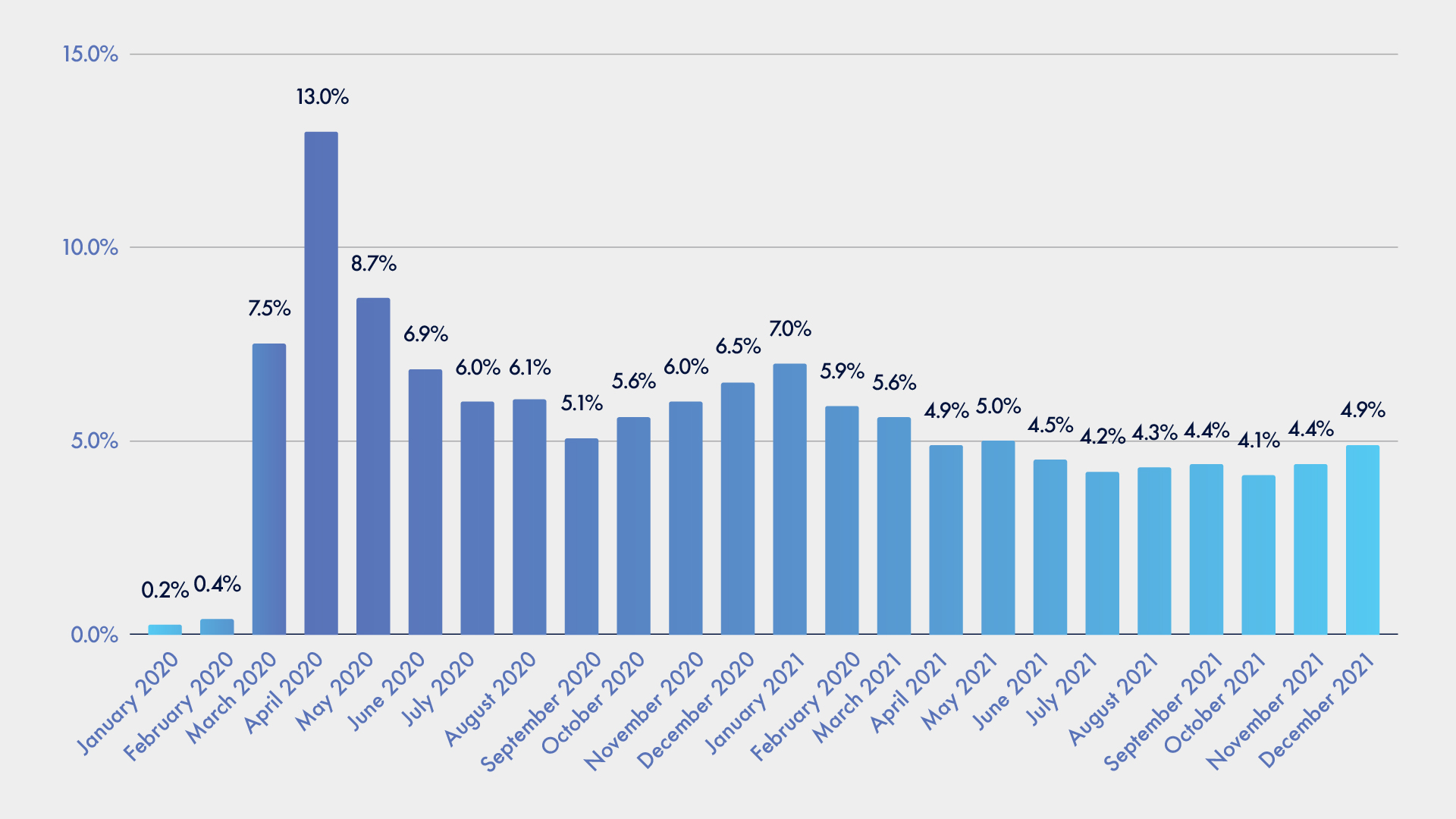Omicron Drives New Surge in National Telehealth Utilization
The surge of Omicron cases drove a significant increase in telehealth utilization from November to December, according to nonprofit data consultant FAIR Health. Here is a quick briefing on the new data. A Dramatic Turnaround Increases in telehealth use during the pandemic is nothing new. The spikes in telehealth utilization resulting from the COVID-19 pandemic lockdowns and Medicare coverage waivers are well documented. (See, “Americans Like Telehealth Visits and Want More,” DTET, May 19, 2021.) However, the spikes in the final months of 2021 are noteworthy because they dramatically reverse the nearly 18 months of steady declines that began in May 2020. From September to October, just before the Omicron surge began, telehealth utilization declined almost seven percent on a month-to-month basis, reaching a record-low. But just as how the initial COVID-19 outbreak drove telehealth utilization to new highs in the spring of 2020, the wave of Omicron cases fueled a resurgence at the end of 2021. In December, Telehealth accounted for 4.9 percent of all US medical claims, as compared to 4.4 percent in November, a single month increase of more than 11 percent, according to the independent nonprofit known for its collection and accessible communication of medical claims […]

A Dramatic Turnaround
Increases in telehealth use during the pandemic is nothing new. The spikes in telehealth utilization resulting from the COVID-19 pandemic lockdowns and Medicare coverage waivers are well documented. (See, “Americans Like Telehealth Visits and Want More,” DTET, May 19, 2021.) However, the spikes in the final months of 2021 are noteworthy because they dramatically reverse the nearly 18 months of steady declines that began in May 2020. From September to October, just before the Omicron surge began, telehealth utilization declined almost seven percent on a month-to-month basis, reaching a record-low. But just as how the initial COVID-19 outbreak drove telehealth utilization to new highs in the spring of 2020, the wave of Omicron cases fueled a resurgence at the end of 2021. In December, Telehealth accounted for 4.9 percent of all US medical claims, as compared to 4.4 percent in November, a single month increase of more than 11 percent, according to the independent nonprofit known for its collection and accessible communication of medical claims data.
Telehealth's percentage of private medical claim lines from January 2020 to December 2021. Recreated from Rebecca Pifer/Healthcare Dive, Fair Health data.
Non-COVID-19 Telehealth Utilization
While COVID-19 was the headliner, there were other notable aspects of the December data. Continuing recent patterns, mental health was the number one overall telehealth diagnosis during the month. However, the percentage of all telehealth claims generated by mental health fell, especially in the South where mental health constituted less than 50 percent of all telehealth claim lines. The decline in mental health telehealth claims share corresponded with nationwide increases in acute respiratory diseases and infections. Meanwhile, joint and soft tissue issues cracked the top five telehealth diagnosis list in the Northeast region and hypertension made the list in the South.Takeaway
As with the initial pandemic-related increase, the spike in telehealth utilization associated with Omicron in the final months of 2021 is unlikely to continue, especially once COVID-19 financial assistance comes to an end and the country settles into endemic conditions. In addition, the relative decline in mental health utilization share will probably prove little more than a hiccup that will in no way induce the many experts who predict that virtual mental health will be the primary driver of telehealth in the future.Subscribe to Clinical Diagnostics Insider to view
Start a Free Trial for immediate access to this article